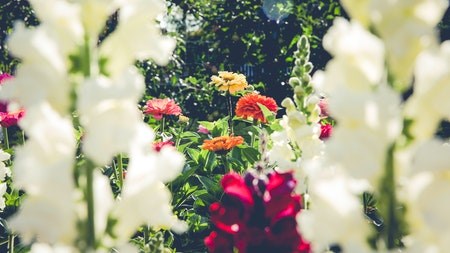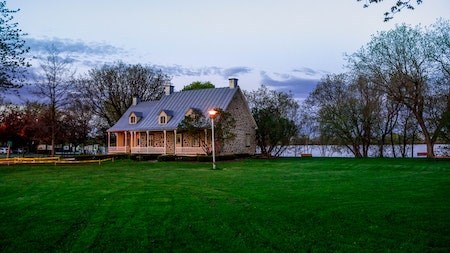Raised bed gardening is simply a way of growing plants in soil that is higher than ground level. You can achieve this with any enclosure or frame made of wood, stone, metal, bricks, or even recycled materials like old doors or furniture.
Raised beds can be as simple or as complex as you like and can fit almost any space. They can be permanent fixtures for perennial plants to settle in and mature or disposable containers for transient annuals.
The initial cost of setting up your raised bed will depend on how elaborate you make it and the materials you choose for the frame. But once implemented, raised beds are no more expensive to maintain than conventional gardens.
Benefits
Raised beds allow more flexibility for controlling the growing conditions in your garden and make it more difficult for pests to reach your plants. The beds don’t have to be very high off the ground or very deep to get the benefits.
Benefits of raised beds include:
You can place raised beds in sun or shade depending on the plants you want to grow.
Plants can be healthier because you can control water drainage and soil quality and prevent the bed from becoming compacted.
If you build the sides wide enough to create a seat, you can sit and garden. This is especially helpful for older gardeners or those with back problems.
Construction
Raised beds don’t have to be very deep to be effective – 15 to 20cm is usually adequate. If drainage is a problem, or if the plants you are growing prefer drier soil, the bed could be taller and filled with a porous growing medium.
The soil and area need to be well-drained to prevent water from building up behind the wall. If water cannot be drained away from the raised bed structure, you need to install weep holes in the base.
You can line the bed to make it more durable and to prevent toxins from leaching into the soil. For lining, use landscape fabric found at nurseries or cloth fabric from clothing.
Cardboard and newspaper are great materials for putting at the bottom of a raised bed if you’re on a budget. Both are cheap and readily available and will decompose over time to add more organic material to the bed.
Avoid non-porous plastic, as it can retain too much water and discourage beneficial insects and worms.
On top of the lining, place a thick layer of grass cuttings and leaves followed by layers of compost and soil.
Suitable materials
Raised garden beds can be made from almost anything that will hold soil and won’t rot. In addition to materials like bricks, pavers, and composite decking material, you can form beds into any shape with a wide range of items. Raid your home storage areas or visit some salvage shops for items that would make attractive, easy-to-assemble raised beds.
Repurposed beverage crates make excellent portable beds. These containers already have drainage holes, and to move your plants to a different spot, you just pick up the crate and go. To change the soil, just lift the crate and dump the contents in the compost heap and refill.
Other suitable materials include:
Railway sleepers
Used tyres
Old wooden planks
Plastic buckets and pond-liners
Sheet metal
Bales of straw and hay
Safety first
Safety is extremely important, especially if you are building retaining walls to form the raised bed.
The wall and bed must be able to contain and bear the weight of the soil and be able to take your weight when you are leaning or sitting on it.
Keep in mind that the higher the structure the greater the risk of toppling. If in doubt, get an experienced builder to advise you.
Avoid sharp corners or edges, splintery wood, jutting nails or screws that could injure you when you lean on the frame to work.
Whatever design or materials you choose to construct your raised garden bed the completed bed should be safe, comfortable and practical to work on when gardening.





